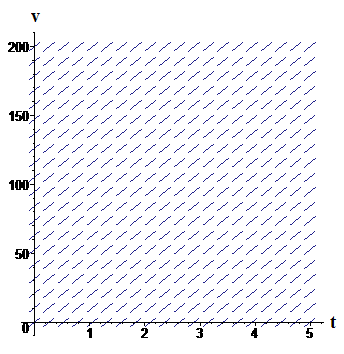Chapter 3
Initial Value Problems
3.3 Another Initial Value Problem: A Falling Body
3.3.2 Gravity and Acceleration
According to Newton's Second Law of Motion (for an object of unchanging mass), the net force acting on an object is the product of its mass and its acceleration. In symbols, this says
where `F` is the net force, `m` is the mass of the object, and `a` is the acceleration. Since acceleration is the rate of change of velocity, we may also write Newton's Second Law in the form
Our marble is subject to a gravitational force, called its weight. Careful experiments have shown that, as long as the falling object is near sea level, this force is approximately proportional to the mass of the object. The proportionality constant, usually abbreviated `g`, is approximately `32.17` feet per second per second.
Thus, we may write Newton's Second Law as the differential equation
We show the slope field for this differential equation — a particularly simple slope field — in Figure 2.

Figure 2 Slope field for velocity of a falling object



